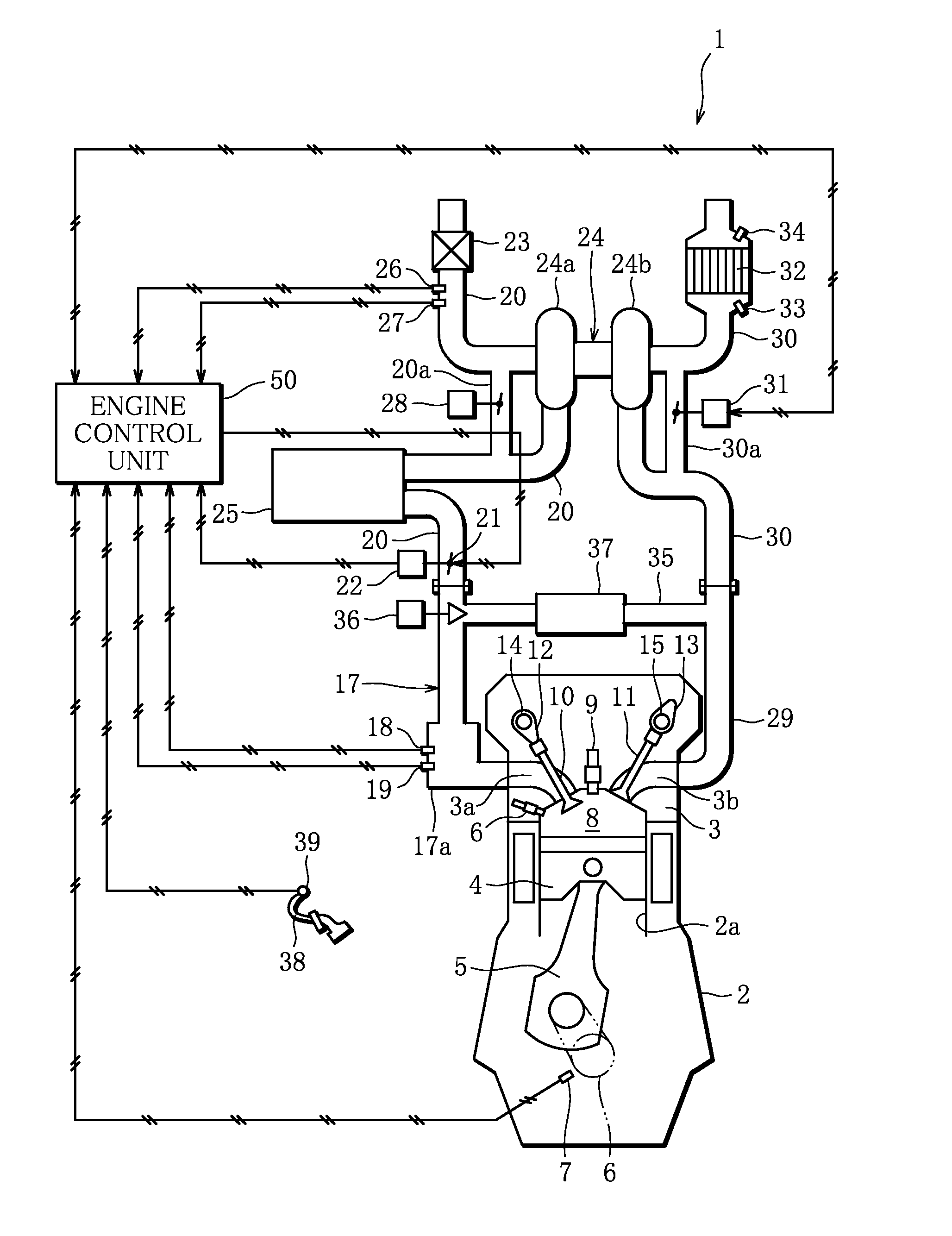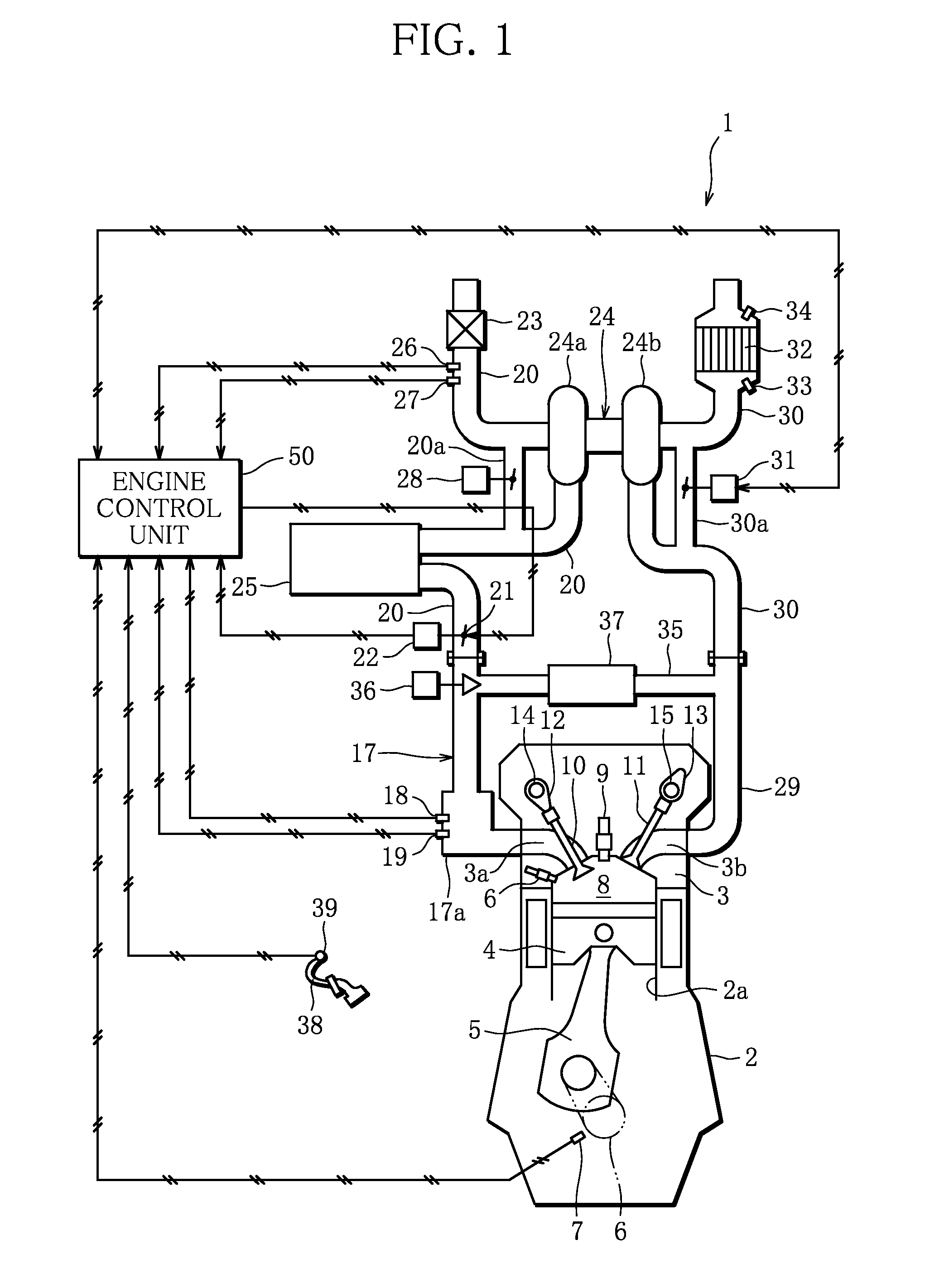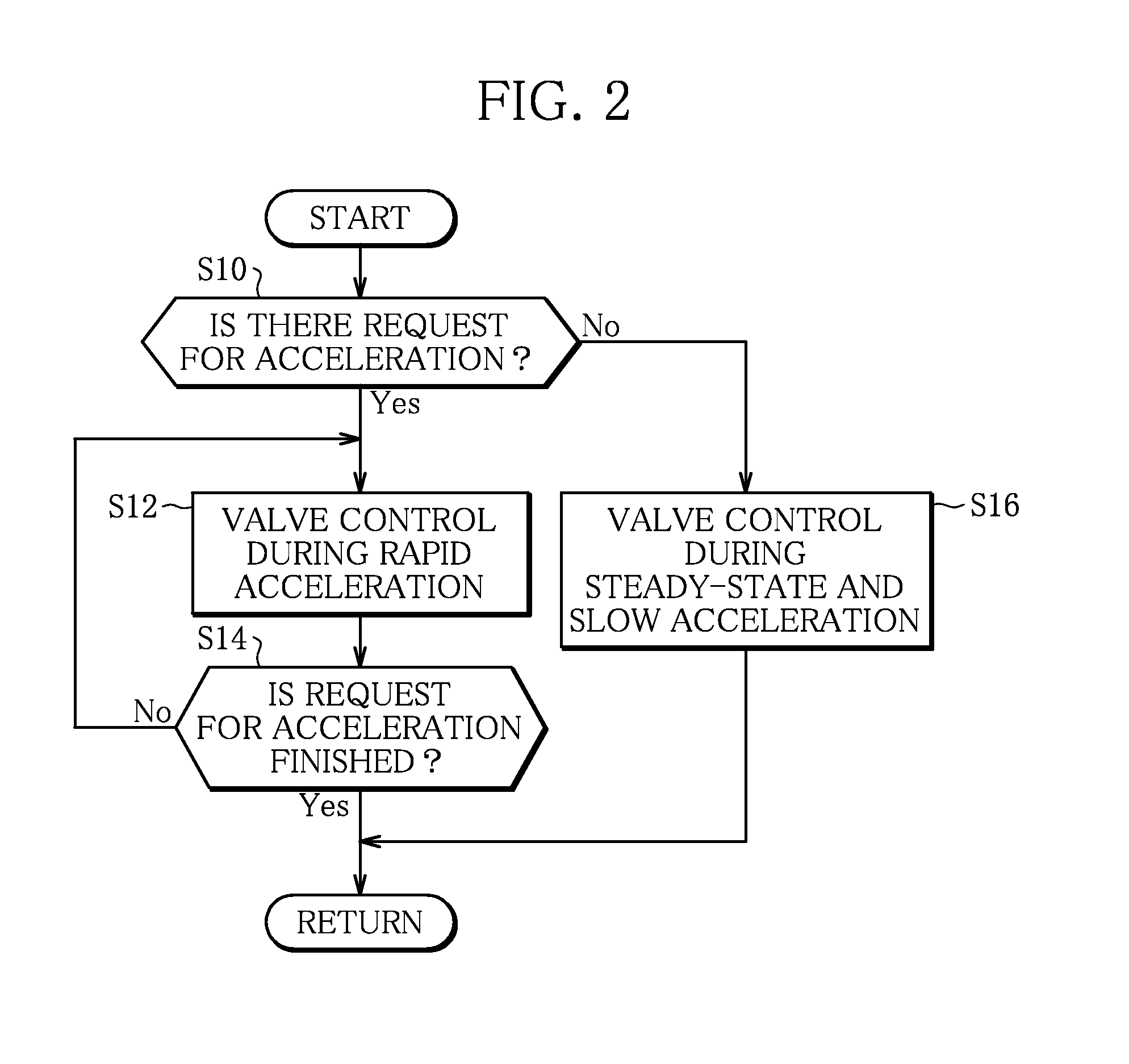Control device for internal combustion engine
- Summary
- Abstract
- Description
- Claims
- Application Information
AI Technical Summary
Benefits of technology
Problems solved by technology
Method used
Image
Examples
Embodiment Construction
[0026]Hereinafter, an embodiment of the present invention will be described on the basis of the accompanying drawings.
[0027]FIG. 1 is a schematic diagram of a direct-injection gasoline engine to which a control device for an internal combustion engine is applied (hereinafter referred to as an engine 1) (internal combustion engine).
[0028]As shown in FIG. 1, the engine 1 is a four-stroke in-line four-cylinder gasoline engine of a direct-injection type in which fuel is injected from a fuel injection valve 16 provided in a cylinder head 3 into a combustion chamber 8. FIG. 1 shows a longitudinal section of one cylinder of the engine 1. Since it is deemed that other cylinders have the same structure, they are not shown and there is no duplicated description on them.
[0029]As shown in FIG. 1, the engine 1 is composed of a cylinder block 2 on which the cylinder head 3 is mounted.
[0030]The cylinder block 2 is provided with a cylinder 2a. In the cylinder 2a, a piston 4 is vertically slidably p...
PUM
 Login to View More
Login to View More Abstract
Description
Claims
Application Information
 Login to View More
Login to View More - R&D
- Intellectual Property
- Life Sciences
- Materials
- Tech Scout
- Unparalleled Data Quality
- Higher Quality Content
- 60% Fewer Hallucinations
Browse by: Latest US Patents, China's latest patents, Technical Efficacy Thesaurus, Application Domain, Technology Topic, Popular Technical Reports.
© 2025 PatSnap. All rights reserved.Legal|Privacy policy|Modern Slavery Act Transparency Statement|Sitemap|About US| Contact US: help@patsnap.com



